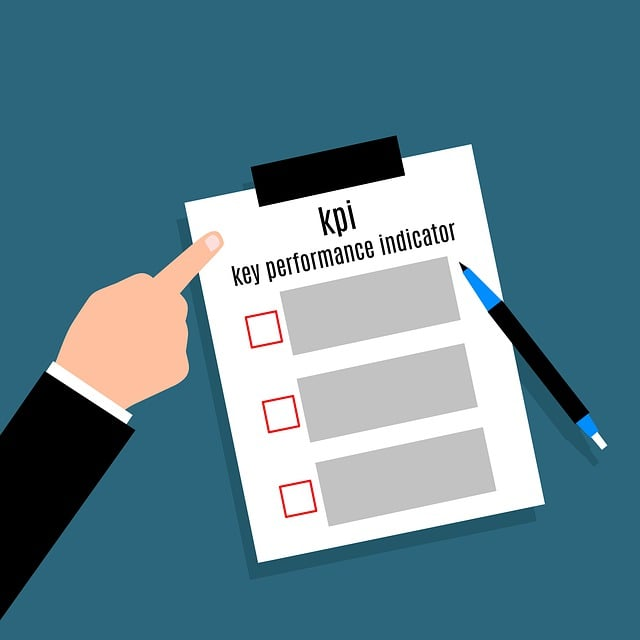Are you ready to take your B2B strategy marketing efforts to the next level in 2023? The ever-evolving digital landscape presents countless opportunities for businesses to reach their target audience in innovative ways. But the key to success lies in implementing a sound B2B strategy marketing plan—one that not only addresses the unique needs of your audience, but also capitalizes on the latest trends and best practices. Let’s embark on a journey to explore the world of B2B strategy marketing and how you can seize the opportunities 2023 has to offer.
Short Summary
- Understand B2B marketing and its key components to develop a successful strategy.
- Set SMART goals, identify target audiences and select appropriate channels for maximum effectiveness.
- Leverage personalization, video marketing & ABM in 2023 to engage your audience & drive customer loyalty.
Understanding B2B Marketing

B2B, or business-to-business marketing, is a specialized field where businesses promote their products or services to other businesses rather than individual consumers. It’s a realm where the buying process is more complex, the sales cycles are longer, and the decision-making units are larger. But why should you care about it? Because it’s the backbone of many businesses—whether it’s selling raw materials to manufacturers, software to enterprises, or office supplies to companies.
B2B marketing focuses on solving other businesses’ pain points and providing value through educational content. It’s all about understanding your audience and creating strategies that resonate with them. It’s where digital marketing techniques like marketing automation, search engine optimization (SEO), and content marketing come into play. These strategies help businesses reach potential customers, generate leads, and nurture them through the marketing funnel to close deals.
Key Components of B2B Marketing
When you peel back the layers of a successful B2B marketing strategy, you find several key components at its core. Understanding your target audience is paramount. It includes knowing who they are, what their pain points are, and how your product or service can provide a solution. Once you have a clear picture of your audience, setting goals becomes much more straightforward.
Establishing objectives, selecting the right marketing channels, and measuring success are other vital components of B2B marketing. Whether you’re leveraging social media channels, SEO, or email marketing, the results of your efforts should be measured against established KPIs (Key Performance Indicators). This process ensures that your marketing strategy is not just a shot in the dark, but a calculated approach aimed at achieving your business goals.
Developing Your B2B Marketing Strategy

Once you grasp the essence of B2B marketing, the next step is to develop a dynamic marketing strategy. But where do you start? The first step is setting SMART goals—Specific, Measurable, Achievable, Relevant, and Time-bound. These goals provide a clear direction for your marketing efforts and serve as a roadmap for acquiring new clients and retaining existing ones.
Identifying your target audience is the cornerstone of your strategy. It involves creating buyer personas that represent your ideal customers and understanding their needs, preferences, and pain points. Once you know who you’re speaking to, you can choose the most effective marketing channels to reach them. Whether it’s SEO, social media, or email marketing, each channel should be selected with your audience in mind, ensuring your message gets to the right people at the right time.
Setting SMART Goals
SMART goals provide a clear and actionable framework for B2B marketers. They help you define what you want to achieve, how you plan to do it, and when you want to see results. For instance, a SMART goal could be to increase website traffic by 20% in the next six months using SEO and content marketing. This goal is Specific (increase website traffic), Measurable (by 20%), Achievable (with SEO and content marketing), Relevant (to improving brand visibility), and Time-bound (in the next six months).
Tracking progress is an integral part of working with SMART goals. By setting goals that are specific and measurable, you can monitor how well your marketing efforts are paying off. This process not only helps you stay focused and motivated, but also allows you to identify areas for improvement and make necessary adjustments along the way.
Identifying Your Target Audience
In the B2B landscape, identifying your target audience is more than just understanding who they are—it’s about getting into the nitty-gritty of their needs, challenges, and pain points. This process involves creating detailed buyer personas, which are fictional representations of your ideal customers. These personas help you understand who your customers are, what they value, and how your product or service can benefit them.
Once you have a clear understanding of your target audience, you can tailor your marketing messages to resonate with them. For instance, if your target audience comprises small business owners, your marketing messages should address the specific challenges and pain points they face. By understanding who your audience is and what they need, you can create marketing campaigns that not only attract their attention but also convince them that your product or service is the solution they’ve been looking for.
Selecting Marketing Channels
Choosing the right marketing channels is crucial for the success of your B2B marketing strategy. The marketing channels you select should be ones where your target audience spends their time. This could be on social media platforms, search engines, or industry-specific websites. The goal is to reach your audience where they are and engage them with valuable and relevant content.
The most effective marketing channels for B2B include SEO, social media marketing, and email marketing. SEO helps improve your website’s visibility on search engines, making it easier for potential customers to find you. Social media marketing allows you to engage with your audience and build relationships. Email marketing, on the other hand, lets you nurture leads and keep your brand top-of-mind. The key is to choose the channels that align with your audience’s preferences and your business goals.
Essential B2B Marketing Tactics
Now that we’ve covered the foundation of a winning B2B marketing strategy, let’s delve into the tactics that bring it to life. Content marketing, SEO, social media marketing, and email marketing form the four pillars of a robust B2B marketing strategy. These tactics not only help attract and engage your target audience, but also nurture leads and convert them into customers.
Content marketing involves creating and sharing valuable content that educates your audience and addresses their pain points. SEO is all about optimizing your content to improve its visibility on search engines, while social media marketing helps you engage with your audience and build brand awareness. Lastly, email marketing allows you to nurture leads and keep your audience updated about your products or services.
Together, these tactics form a comprehensive B2B marketing strategy that attracts, engages, and converts your target audience, all thanks to the efforts of your marketing team.
Content Marketing

Content marketing is a powerful B2B marketing tactic that focuses on creating and distributing valuable, relevant, and consistent content. The goal is to attract and retain a clearly defined audience – and ultimately, drive profitable customer action. It’s about understanding your audience’s pain points and providing solutions through your content.
A successful content marketing strategy involves creating content that not only addresses your audience’s pain points but also positions your brand as a thought leader in your industry. This could be in the form of blog posts, white papers, ebooks, webinars, and more. The idea is to provide your audience with valuable information that they can’t find anywhere else, making your brand a go-to resource in your industry.
Search Engine Optimization (SEO)

Search engine optimization (SEO) is another critical B2B marketing tactic. SEO involves optimizing your website and content to rank higher on search engine results pages (SERPs). This increases your website’s visibility and drives more organic traffic to your site. But SEO is more than just driving traffic—it’s about attracting the right kind of traffic.
By targeting specific keywords and phrases related to your products or services, you can attract potential customers who are actively searching for solutions you provide. Additionally, a well-optimized website provides a better user experience, making it easier for visitors to find the information they’re looking for and take desired actions. This could be filling out a form, signing up for a newsletter, or making a purchase.
Social Media Marketing

Social media marketing is a potent tool for building brand awareness, engaging with your target audience, and sharing valuable content. With billions of users worldwide, social media platforms like LinkedIn, Facebook, and Twitter provide a wealth of opportunities for B2B marketers to reach and engage their audience.
Successful social media marketing involves more than just posting updates—it’s about creating conversations and building relationships. It’s about listening to your audience, responding to their comments, and providing valuable content that educates and entertains.
By doing so, you can build a strong online presence and a loyal following of existing customers through influencer marketing, who are likely to recommend your brand to others.
Email Marketing

Email marketing is an effective way to nurture leads, share content, and maintain relationships with your target audience. It allows you to reach your audience directly in their inbox, providing personalized content that aligns with their needs and interests. From promotional emails and newsletters to automated drip campaigns, email marketing provides a direct line of communication between your brand and your audience.
Successful email marketing involves more than just sending emails—it’s about delivering the right message to the right person at the right time. It’s about understanding your audience’s needs and providing solutions through your content. It’s about tracking open rates, click-through rates, and conversions to measure the success of your campaigns and make necessary adjustments. By doing so, you can ensure your email marketing efforts drive results and contribute to your overall business goals.
Measuring B2B Marketing Success
After laying the groundwork and executing your B2B marketing strategy, the next step is to measure your success. This involves tracking key performance indicators (KPIs) like website traffic, lead generation, conversion rates, and more. By monitoring these metrics, you can evaluate the effectiveness of your marketing efforts, identify areas for improvement, and make data-driven decisions.
Measuring B2B marketing success also involves analyzing the results of your efforts and making necessary adjustments. This might include tweaking your SEO strategy, experimenting with different types of content, or refining your target audience. By continually analyzing and optimizing your strategy, you can ensure your marketing efforts are aligned with your business goals and are driving the results you seek.
Key Performance Indicators (KPIs)

Key performance indicators (KPIs) are quantifiable measures that help B2B marketers track the effectiveness of their marketing efforts. They provide valuable insights into how well your marketing strategies are working and where improvements can be made. Common KPIs in B2B marketing include website traffic, conversion rates, lead generation, and customer retention rates.
By tracking these KPIs, you can get a clear picture of the return on investment (ROI) of your marketing efforts. You can see which strategies are driving the most traffic, which are generating the most leads, and which are leading to the most conversions. This data can inform your decision-making process and help you allocate your resources more effectively, ensuring maximum ROI.
Analyzing and Optimizing Your Strategy

Analyzing and optimizing your B2B marketing strategy involves reviewing the results of your efforts, identifying areas for improvement, and making necessary adjustments. This might include refining your buyer personas, tweaking your content marketing strategy, or experimenting with different marketing channels. The goal is to ensure your marketing efforts are as effective as possible and are driving the results you seek.
Identifying opportunities for growth is a critical part of this process. By analyzing your marketing results, you can spot trends, understand what’s working and what’s not, and identify areas where you can improve. This could involve adjusting your marketing messages, experimenting with different content formats, or trying out new marketing channels. Through constant analysis and optimization, you can ensure your B2B marketing strategy is always evolving and improving, driving better results over time.
B2B Marketing Trends for 2023

In the dynamic world of B2B marketing, it’s essential to stay ahead of the curve and leverage the latest trends. As we look ahead to 2023, several key trends are poised to shape the B2B marketing landscape. From AI-driven personalization to the rise of video marketing and account-based marketing (ABM), these trends offer exciting opportunities for B2B marketers to engage their target audience and drive results.
In the face of changing consumer expectations and technological advancements, these trends underscore the need for B2B marketers to be agile, innovative, and customer-centric. By embracing these trends and integrating them into their marketing strategy, B2B marketers can not only stay competitive, but also create meaningful connections with their target audience, drive customer loyalty, and boost their bottom line.
Personalization and AI
Personalization and AI are set to take center stage in B2B marketing in 2023. In an era where customers demand personalized experiences, AI-driven personalization allows B2B marketers to deliver customized content and experiences to their target audience. This not only enhances customer engagement but also drives higher conversion rates.
AI algorithms can analyze user data and preferences to deliver more precise and relevant content recommendations, allowing businesses to engage their audience with content that resonates with them. Whether it’s recommending relevant blog posts, tailoring email marketing messages, or personalizing website experiences, AI-driven personalization can help B2B marketers create deeper connections with their audience and drive better results.
Video Marketing
In an age of dwindling attention spans and increasing demand for engaging content, video marketing emerges as a powerful tool for B2B marketers. Videos are not only more engaging than text-based content, but they’re also more likely to be shared on social media, increasing your brand’s reach and visibility.
From product demos and explainer videos to customer testimonials and thought leadership content, video marketing offers a plethora of opportunities to engage your target audience and share your brand story. By integrating video into your B2B marketing strategy, you can enhance brand awareness, improve customer engagement, and drive more conversions.
Account-Based Marketing (ABM)
Account-based marketing (ABM) is a targeted approach to B2B marketing that focuses on engaging specific high-value accounts. Instead of casting a wide net with your marketing efforts, ABM involves identifying key accounts and creating personalized marketing campaigns to engage those accounts.
ABM allows B2B marketers to focus their resources on high-value accounts, leading to better ROI. By creating personalized marketing campaigns that resonate with these accounts, you can drive higher engagement and conversion rates.
Whether you’re targeting a handful of key accounts or scaling your ABM efforts to target hundreds of accounts, this approach can help you achieve your marketing goals more efficiently.
Summary
As we’ve explored in this blog post, implementing a winning B2B marketing strategy in 2023 involves understanding B2B marketing, developing a robust strategy, leveraging essential marketing tactics, measuring success, and staying ahead of key trends. From setting SMART goals and identifying your target audience to leveraging content marketing, SEO, social media marketing, and email marketing, each aspect plays a critical role in the success of your B2B marketing strategy.
In the face of rapidly evolving customer expectations and technological advancements, B2B marketers need to be agile, innovative, and customer-centric. By embracing the latest trends like personalization and AI, video marketing, and ABM, you can create meaningful connections with your target audience, drive customer loyalty, and boost your bottom line. Remember, the key to success lies not just in implementing these strategies, but in continually analyzing and optimizing them to drive better results over time.
Frequently Asked Questions
What are B2B marketing strategies?
B2B (business-to-business) marketing refers to any marketing strategy used by one business to target and sell to another business. Companies that sell products or services to other businesses or organizations typically use B2B marketing strategies, and in some cases, B2B companies operate as such because they sell products that only other businesses want to buy in large volumes.
B2B marketing strategies can include email campaigns, content marketing, search engine optimization, and more. Companies can also use B2B marketing to build relationships with other businesses, create brand awareness, and increase sales. By understanding your understanding of the law.
What are the 4 pillars of B2B marketing?
The 4 Pillars of B2B marketing are the 4 C’s – Content, Context, Communication and Conversion.
These four components must be addressed and evaluated in any successful B2B marketing campaign.
What is B2B marketing?
B2B marketing is the process of promoting products or services to other businesses, with a focus on providing value and solving problems.
It involves understanding the needs of the target audience and creating content that resonates with them. It also requires a deep understanding of the industry and the competitive landscape.
Successful B2B marketing requires a strong marketing strategy.
What are the B2B marketing trends for 2023?
B2B marketing in 2023 will prioritize personalization and AI, video marketing, and account-based marketing (ABM) for a more tailored experience.
Personalization and AI will be used to create a more customized experience for customers. Video marketing will be used to engage customers and create a more interactive experience. Finally, ABM will be used to target specific accounts and provide them with tailored content.
How do you measure B2B marketing success?
Measuring B2B marketing success involves tracking key performance indicators and analyzing the results to optimize the strategy for maximum impact.


